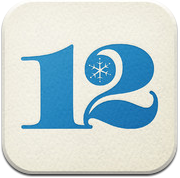Twitter is another type of social networking you've no doubt heard of, but if you're like many that haven't even looked at it, or ever understood what it's for, you've come to the right place!
In short, twitter is a service that allows you to share what your up to, whats on your mind, what's new, what's going on, what's trending etc. There is a limit to how much you can write with a limitation of 140 characters per tweet.
There are different types of users too. Some are companies, most are individuals, some are blogs, some are news sites, others are spam. You get all sorts on twitter.
Apart from "tweeting" what you're up to, or whatever your tweet is, you can also "follow" people. This principle is similar to the friend feature on facebook, except that most people don't have their profile on private, in fact by default your account is public, which means anyone can follow you and get your updates.
Many people don't even use twitter to post anything, rather they just use it to follow others (myself included) to get their updates and find out whats happening. The way I use twitter is to get news updates from specific companies that I have an interest in. For example, you can follow Microsoft, Google, Apple, your bank, your phone carrier, your friends, your local news publisher, and so on. In this way you essentially get a customised news feed which gives you updates and news on places, companies and people you care about.
Personally, I think this is the best thing about twitter, and this is the primary reason I use it.
Let's get into a few guides on how to use and interact with twitter.
Firstly, you'll have to get an account. When you navigate to twitter.com for the first time, you'll get a login screen, and a prompt to sign up for a new account. It will look similar to this:
In order to sign up, just enter your details in the box that says "New to Twitter?" then click the yellow button below.
The next screen will confirm your details and ask you to create a username. This username will appear all over twitter whenever you make tweets or when people refer to you in a tweet. This can be changed later if you need to. It looks a little like this.
Finally, you click create my account. You will then be presented with a quick set-up which will help you find your friends on twitter, help you locate potential people/companies/etc to follow
Towards the end of the set-up guide, the service will ask you for a short Bio about yourself, with a limitation of 160 characters, and the option to upload a profile picture. None of any of this information is required, however I'd recommend putting at least something in. Even if it is very basic information. Eg. "My hobby is stamps", or something.
This is the final step to the set-up guide of creating a twitter account on the twitter website. The next screen you'll see is the main screen. This will change over time as you start to follow more and more people. But it might look like this when you first start. You may also be asked to confirm your email address with twitter.
On the left hand side of the screen, you can see worldwide trends, which you can customise to be your location, by clicking change.
Above this box is your profile box, where you can create a new tweet, see how many people you follow, how many follow you, and how many tweet's you've made since creating your account.
The last piece of info I'll go into in this guide is the hashtag section. A hashtag is a tag you can add to your tweets when you are tweeting about something that is relevant to an event, time, news or something happening. For example, looking at the list of trending topics posted in the screenshot, Titatic is a topic which is getting a lot of attention on twitter at the moment. If you were to write a tweet about the Titanic movie, you could include a Titanic hashtag in your tweet. An example tweet could be: "Going to see a ship destroyed by an iceberg in 3D. Should be awesome. #Titanic" In this way, you are referring to the titanic, but not actually including it in your sentence. It's a good way to add topics to your tweet, whilst reducing the word count, and keeping up with current trends.
That's it. With all this info at hand you should have a basic idea about twitter, how it works, and how to use it. If you have any questions, please feel free to post in the comments below, and I'll do my best to answer you.
If you liked this post, or found it useful, please feel free to share with your friends to pass the info on using the buttons below.








































